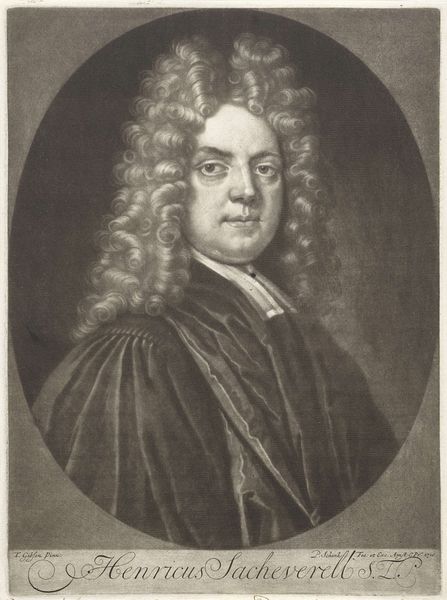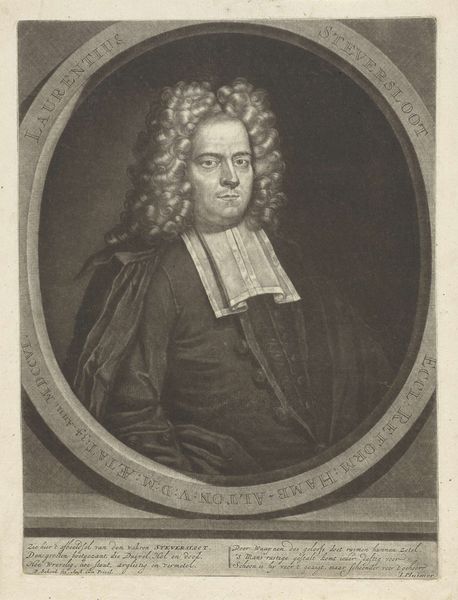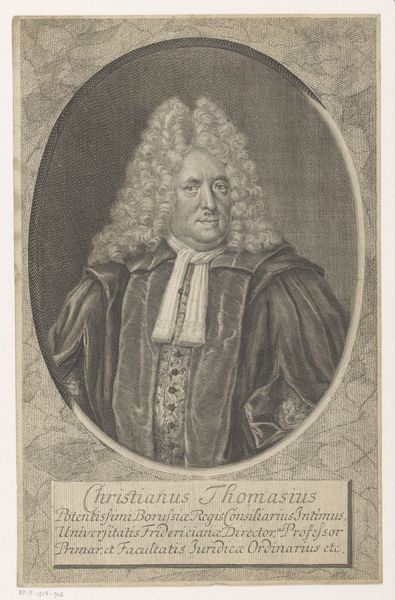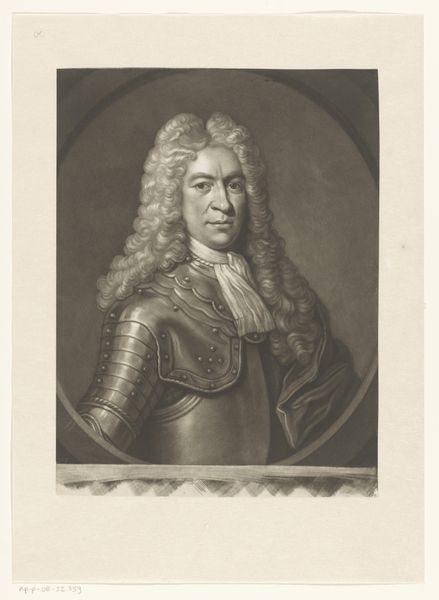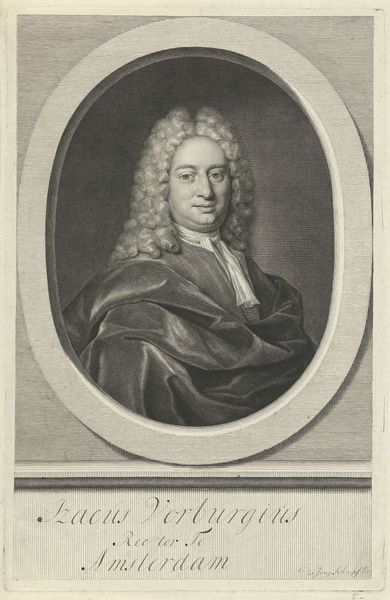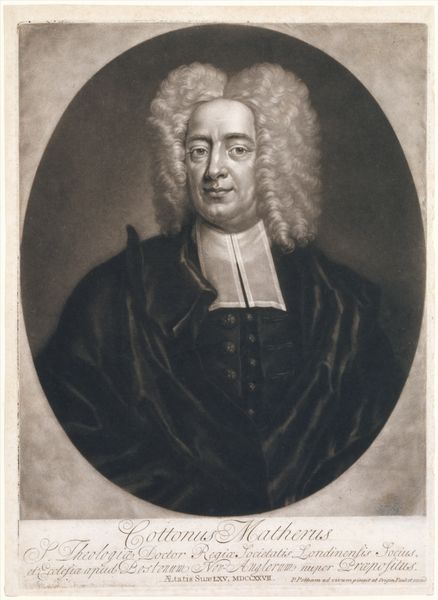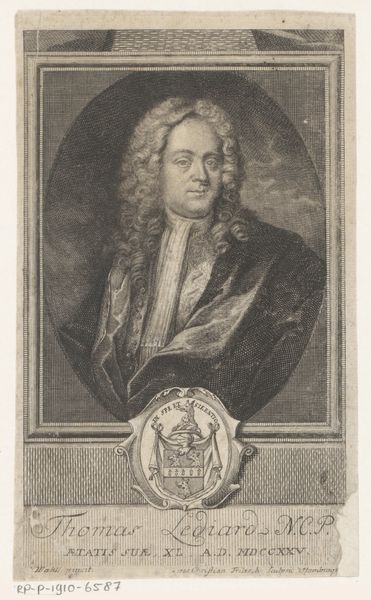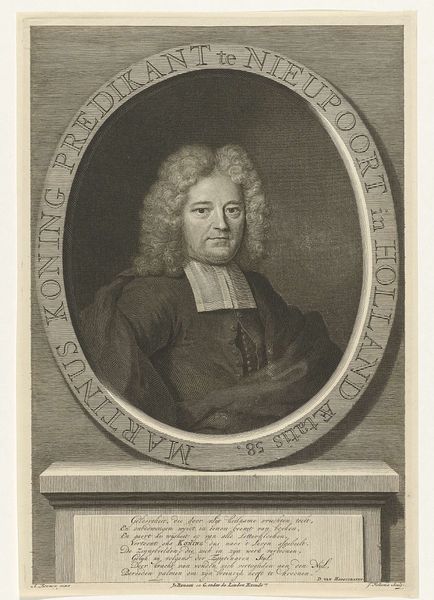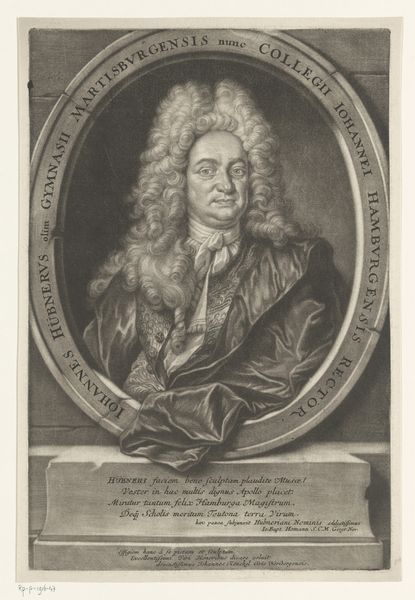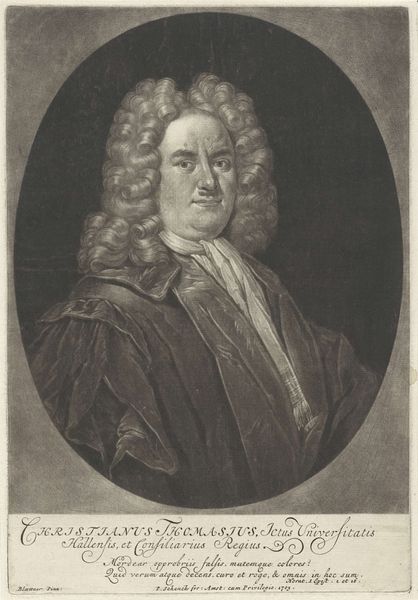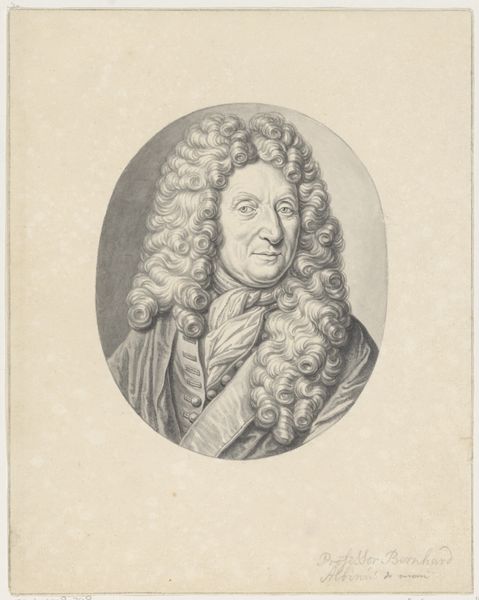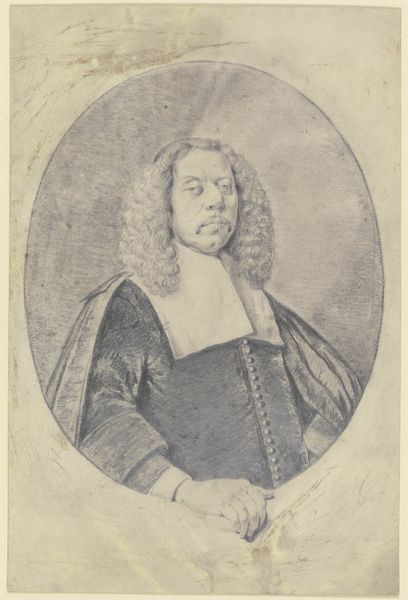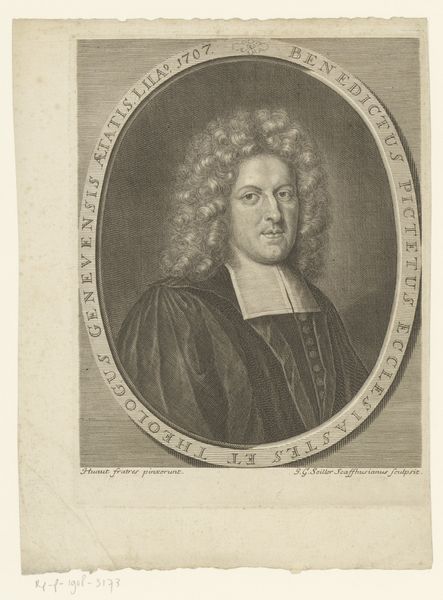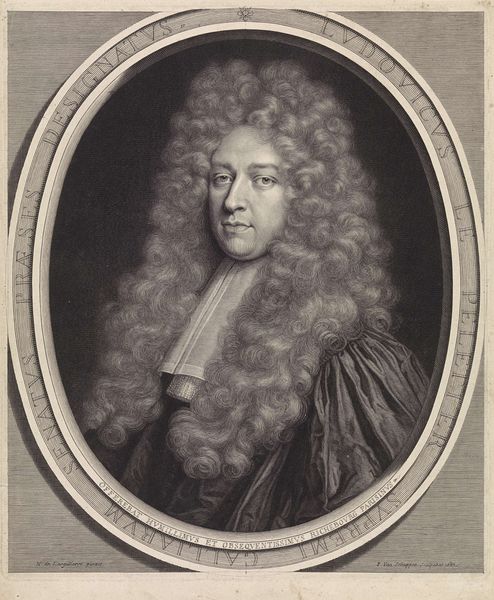
#
photo of handprinted image
#
wedding photograph
#
photo restoration
#
wedding photography
#
film poster
#
historical photography
#
portrait reference
#
framed image
#
19th century
#
fine art portrait
Dimensions: height 347 mm, width 248 mm
Copyright: Rijks Museum: Open Domain
Curator: This portrait, created sometime between 1700 and 1718, depicts Henry Sacheverell. Let's delve into this interesting piece. What strikes you most immediately? Editor: Well, my first thought is about the texture. The wig, the drapery—it all feels very… heavy. I am curious to know more about the material and time it took to complete. Curator: Agreed. Considering the time period, such images held significant power. Portraits like these were not mere decorations; they were tools used to shape public image and legitimize power. Sacheverell, as a high church Tory, was a controversial figure. Editor: It raises the question: how was it disseminated, and how did that affect its meaning? This wasn’t a cheap reproduction. I am really interested to know more about its production! Curator: It's likely these portraits circulated amongst a specific social class, further cementing their connection to the Tory cause and bolstering support for Sacheverell's beliefs. And what about the symbolic choices embedded within the piece? The flowing wig for instance! Editor: A wig like that signifies status, yes, but it also obscures identity. In its making, it signals considerable resources in its raw materials as well. Were all materials locally sourced, or part of wider trade routes? Curator: Those are all pertinent considerations! Indeed, portraits were designed not just to represent but to actively construct particular personas, emphasizing traits like intellect, piety, or authority, especially for figures involved in complex political environments. Editor: Precisely. What interests me are the conditions under which these works are produced, who are these laborers? By analyzing the social framework involved, we can decode power dynamics of its day. It’s all about the making of… Curator: The portrait itself becomes a political artifact. This helps us grasp its cultural and political resonance, making it a fascinating case study. Editor: Exactly, reflecting its society in more ways than one, and I will take note of the amount of labor and commerce involved in this single artwork.
Comments
No comments
Be the first to comment and join the conversation on the ultimate creative platform.
